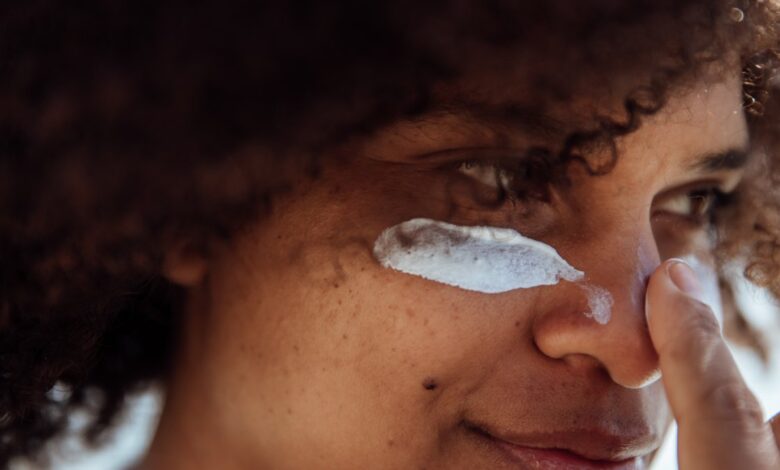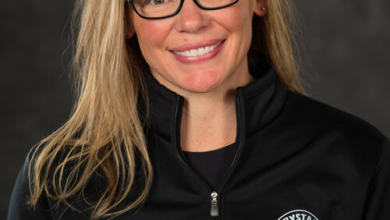What is the best SPF? Doctor shares top sunscreen tips – NBC Chicago

Does sunscreen expire? What’s the best SPF? How should you really be storing your sunscreen?
With a dangerous heat wave hitting the Chicago area, proper sun care will be even more important.
But while you might think you know the answers to some of the most-asked questions, there’s still plenty of advice that might surprise you.
We asked area dermatologists to break down some of the biggest questions:
Does sunscreen expire?
That sunscreen you’ve had sitting in your cabinet for multiple summers does in fact have an expiration date.
But how long is too long to go without swapping it out?
According to Megha Trivedi, assistant professor of dermatology at RUSH Medical College, sunscreen should be replaced at least every three years.
“Now, that being said, if you are using your sunscreen correctly, you should be going through a bottle much sooner than three years,” she told NBC Chicago. “But typically, if something is sitting there and you’re not sure that’s kind of the timeframe you want to use.”
The U.S. Food and Drug Administration requires sunscreen to maintain their original strength for that time frame.
Trivedi said using expired sunscreen can lead to decreased protection and increased risks of UV damage, including the potential to lead to skin cancer.
Signs your sunscreen is expired
What if you don’t know how old your sunscreen is or you suspect it may be going bad sooner than expected?
Trivedi said it depends on the type of sunscreen.
“Mineral sunscreens are typically more photo stable … usually you want to store sunscreen in a cool, dark place, and that helps it to become a little bit more stable, lasting a bit longer,” she said.
Trivedi said she uses three major indicators:
1. Color
“So, you know, if you had a sunscreen that has certain color when you bought it, but now it’s a little bit more brown or it’s just off,” Trivedi said.
2. Consistency
“So if you have a sunscreen that was perhaps a little thicker when you first bought it and now it’s more watery or it’s grittier, you know, it’s clumping together, that’s another sign that it might not be as good,” Trivedi added.
3. Odor
“So, I know sunscreen sometimes does not smell good, but typically you can tell when you first bought the sunscreen versus, you know, a few years later, that sunscreen does have, quote unquote, a funky odor,” she said. “And that’s the one that you want to, you know, say, ‘OK, maybe I’ll invest the new sunscreen at this time.”
Ways to preserve your sunscreen
According to the Mayo Clinic, there are steps you can take to preserve your sunscreen too.
- Avoid exposing the container to excessive heat or direct sun
- Place sunscreen containers in the shade or wrap them in a towel
- Discard sunscreen that has any obvious changes in color or consistency
What is the best sunscreen?
“The best sunscreen is the one that you are going to use,” Trivedi said.
But here’s what she looks for as a dermatologist:
- SPF 30: “That’s going to be very important.”
- Mineral vs. chemical: “A lot of people don’t prefer a mineral sunscreen just because it does go on a little bit more white; however, I actually say if you can tolerate it now – there’s many different formulations out there that go on a little bit more sheer- I would pick a mineral sunscreen and the reason is mineral sunscreens are more broad spectrum, so they make sure it covers you from UVA, UVB and for two other reasons.”
Trivedi said using expired sunscreen can lead to decreased protection and increased risks of UV damage, including the potential to lead to skin cancer.
What about spray sunscreen?
Spray sunscreen is really popular in the summer, but there are some dos and don’ts when using it. NBC 5’s Health and Wellness Reporter Lauren Petty reports.
Tossing a can of spray sunscreen in your beach bag may feel convenient, or may even be less messy than carrying around a bottle of white, goopy lotion. But that’s only as long as you apply it correctly.
“Most often times that I see a sunburn, I ask the person, did they use sunscreen? And it is almost always ‘I used a spray sunscreen,'” said Dermatologist and Chicago Derm Institute founder Dr. Jordan Carqueville. “I think the biggest challenge is using it correctly. I don’t think everyone uses it correctly.”
According to Carqueville, “adequate coverage” when applying sunscreen is key. But coverage and application looks different when it comes to sunscreen in a spray can — and so does how much you should be putting on.
“Typically, when you’re using a lotion, you’re using about a shot glass amount for the whole body,” Carqueville said. When applying a spray however, it’s much more challenging to get the amount correct.
How much sunscreen should you be using?
“For spray sunscreen, it’s really hard to get that accurate quantity,” Carqueville said. “So most people are not using enough. And that’s when we see the burns.”
So, what exactly is “enough” when it comes to spraying the sunscreen on? It depends, Carqueville said.
Some sprays are thicker and need to be rubbed in. Others are thinner, with an alcohol or chemical-base, making the amount harder to see, Carqueville said, adding that the the thicker products are preferred as they usually contain a mineral component.
“You should see a sheen on you,” Carqueville said. “But it’s hard to quantify.”
The other challenge spray sunscreen can present, Carqueville said, is the chance of it being ingested, especially as parents attempt to apply it to their perhaps wiggly children.
“When the parents are putting them on, there’s a greater chance of breathing with these products and these chemicals that we don’t really intend for them to be internal,” Carqueville said.
Where and how you apply it matters
Spray sunscreen is best applied outdoors, Carqueville said, or in “well-ventilated areas.”
“Our main goal is use these correctly,” Carqueville said. “Don’t inhale them, don’t spray your face. Put them on in an adequately ventilated room.”
Another factor that can come into play when applying spray sunscreen, especially outdoors, is the wind.
“There was an article that came out of Australia in 2021 that said just a typical low windy day on the beach, 79% of the sunscreen was lost to the air when applied in a normal fashion,” Carqueville said. “So we know that even in a mildly windy area…you lose a lot of product.”
According to Carqueville, a can of spray sunscreen should be held about one to two inches away from the skin when applying, “so that you are not losing it to the wind.”
Sunscreen alternatives
For those who don’t tote cans and containers of sunscreen around, Carqueville’s “biggest suggestion” — especially for families with young children — is sun-protective clothing that includes SPF and rash guard.
“I think it’s ideal for families and children because you don’t have to wrestle getting them on sunscreen on them and reapplying every two hours,” Carqueville said. “So this is the most effective way, is getting good shade, some protective clothing and also just really broad spectrum hats.”
What SPF number is best?
According to Carqueville, the SPF — or sun protection factor — number in sunscreen to look for should be 30 or above.
“When you look for 30 and above, you know that you have 97% of the sun’s rays filtered out,” Carqueville said. “If go for the higher ones, that’s fine. You’re not getting that much more benefit. But 30 and above is usually a recommendation.”
Ingredients to look for — and to watch out for
Mineral sunscreens that contain zinc oxide and titanium dioxide can help with sensitive skin, Carqueville said, adding that many mineral sunscreen come in a tinted form, creating a smoother look.
Certain ingredients found in chemical sunscreens, like Oxybenzone and Octinoxate, are banned in certain states as they have been known to damage coral. Additionally, in 2021, many spray sunscreens were recalled due to a contaminant called Benzene, a chemical known to be harmful to humans.
Mineral or not, the best course of action to take is to apply sunscreen correctly, experts say.
“My biggest advice is to find a product that you like, use it correctly and use it often,” Carqueville said.




